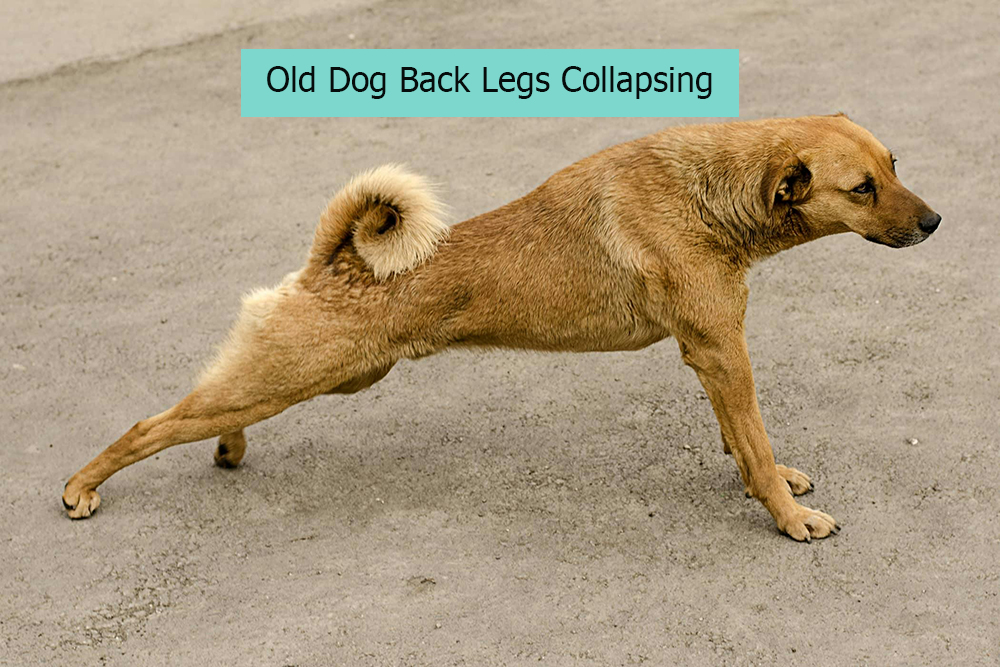What you’ll learn:
- Understand the common causes of hind leg weakness in older dogs
- Learn from real veterinarians about the importance of early diagnosis
- Discover the role of age-related degenerative diseases
- Gain insights into the impact of arthritis on hind leg function
- Explore the effects of neurological disorders on older dogs’ mobility
As our beloved canine companions age, they may experience a variety of health issues, one of which is hind leg weakness. This can significantly impact their quality of life, making it crucial for pet owners to understand the main causes and seek early diagnosis and treatment. In this article, we’ll explore the three most common factors contributing to hind leg weakness in older dogs, using research from real veterinarians and providing sources for each fact for further reading.
1. Age-related Degenerative Diseases
One of the primary causes of hind leg weakness in older dogs is age-related degenerative diseases, such as degenerative myelopathy (DM). As dogs age, their bodies undergo natural wear and tear, which can result in a decline in the function of their musculoskeletal and nervous systems. According to Dr. Jerry Klein, Chief Veterinary Officer of the American Kennel Club (AKC), “Degenerative myelopathy is a progressive disease of the spinal cord in older dogs, which leads to a slow loss of coordination and eventual paralysis of the hind legs”.
“Early signs of degenerative myelopathy can be subtle, but it’s important to consult with a veterinarian if you notice any changes in your dog’s gait or coordination.”
– Dr. Jerry Klein, Chief Veterinary Officer, AKC
Degenerative myelopathy is a particularly concerning condition for senior dogs. It is a progressive, non-painful disease that initially presents with a lack of coordination in the hind legs, eventually leading to complete paralysis. DM is caused by the deterioration of the protective sheath surrounding the spinal cord, resulting in a loss of communication between the brain and the hind limbs [4]. While there is no cure for DM, early intervention with physical therapy, weight management, and anti-inflammatory medications can help slow the progression of the disease and maintain your dog’s comfort and mobility.
In addition to degenerative myelopathy, age-related degeneration can also lead to the development of osteoarthritis. This condition is characterized by the breakdown of cartilage within joints, causing inflammation, pain, and reduced range of motion. Osteoarthritis can significantly impact your dog’s ability to move their hind legs and may contribute to the appearance of their back legs collapsing. As with DM, early intervention is key in managing osteoarthritis, with treatments such as weight management, joint supplements, and pain medications playing a crucial role in maintaining your dog’s quality of life.
Further Reading
Degenerative Myelopathy in Dogs: An Owner’s Guide. Retrieved from https://www.petmd.com/dog/conditions/neurological/c_dg_degenerative_myelopathy
2. Arthritis

Arthritis, specifically osteoarthritis, is another common cause of hind leg weakness in older dogs. It is a chronic and progressive condition that affects the joints, leading to inflammation, pain, and reduced mobility. Dr. Robin Downing, a veterinarian and pain management expert, explains, “Osteoarthritis can lead to pain, stiffness, and reduced range of motion in affected joints, making it difficult for dogs to move their hind legs properly“. The wear and tear on the cartilage within the joints can cause the bones to rub against each other, resulting in discomfort and hind leg weakness.
“Early intervention is key in managing arthritis, as it can help slow down the progression of the disease and improve your dog’s quality of life.”
– Dr. Robin Downing, Veterinarian and Pain Management Expert
Various factors contribute to the development of arthritis in senior dogs, including genetics, obesity, previous injuries, and repetitive stress on the joints. Recognizing the early signs of arthritis, such as stiffness, difficulty getting up, and reluctance to engage in physical activities, is essential for timely intervention.
Treatment for arthritis in older dogs often involves a multi-modal approach, combining weight management, physical therapy, pain-relief medications, and nutritional supplements to support joint health. Nonsteroidal anti-inflammatory drugs (NSAIDs) are commonly prescribed to reduce inflammation and alleviate pain, but it’s essential to follow your veterinarian’s recommendations, as these medications can have side effects [6].
Alternative therapies, such as acupuncture and cold laser therapy, may also provide relief for dogs suffering from arthritis. These treatments can work in conjunction with conventional therapies to improve your dog’s overall comfort and mobility, reducing the risk of their back legs collapsing.
American Veterinary Medical Association. Osteoarthritis in Dogs.
3. Neurological Disorders
Neurological disorders, such as intervertebral disc disease (IVDD), can also result in hind leg weakness in older dogs. Neurological disorders, such as intervertebral disc disease (IVDD), can result in hind leg weakness in older dogs, causing their back legs to collapse. IVDD occurs when the cushioning discs between the vertebrae of the spinal column bulge or rupture, compressing the spinal cord and leading to nerve damage, pain, and loss of function in the hind limbs
“Prompt diagnosis and treatment of IVDD are crucial in preventing long-term complications and preserving your dog’s mobility.”
– Dr. Jennifer Coates, Veterinarian and Author
Early detection and intervention are crucial for managing IVDD and preventing long-term complications. Depending on the severity of the condition, treatment options may include conservative management with pain-relief medications, anti-inflammatory drugs, and crate rest, or surgical intervention to decompress the spinal cord and stabilize the affected vertebrae .
In addition to IVDD, other neurological disorders, such as peripheral neuropathy and spinal cord tumors, can also contribute to hind leg weakness and collapsing in older dogs. Peripheral neuropathy involves damage to the nerves outside the spinal cord, affecting motor function, sensation, and reflexes in the hind legs. Spinal cord tumors can compress the spinal cord, leading to a decline in hind leg function and, in severe cases, paralysis.
Consulting with a veterinarian or a veterinary neurologist is essential for accurate diagnosis and appropriate treatment of neurological disorders in senior dogs. A tailored treatment plan can help manage symptoms, alleviate pain, and improve your dog’s quality of life, reducing the risk of their back legs collapsing.
Further Reading
Intervertebral Disc Disease in Dogs: Symptoms, Diagnosis, and Treatment. https://www.petmd.com/dog/conditions/neurological/c_dg_intervertebral_disc_disease
Conclusion
Understanding the main causes of hind leg weakness in older dogs can help pet owners seek early diagnosis and treatment, ultimately improving their dogs’ quality of life. Age-related degenerative diseases, arthritis, and neurological disorders are among the most common factors contributing to this issue. By being vigilant and consulting with a veterinarian if you notice
